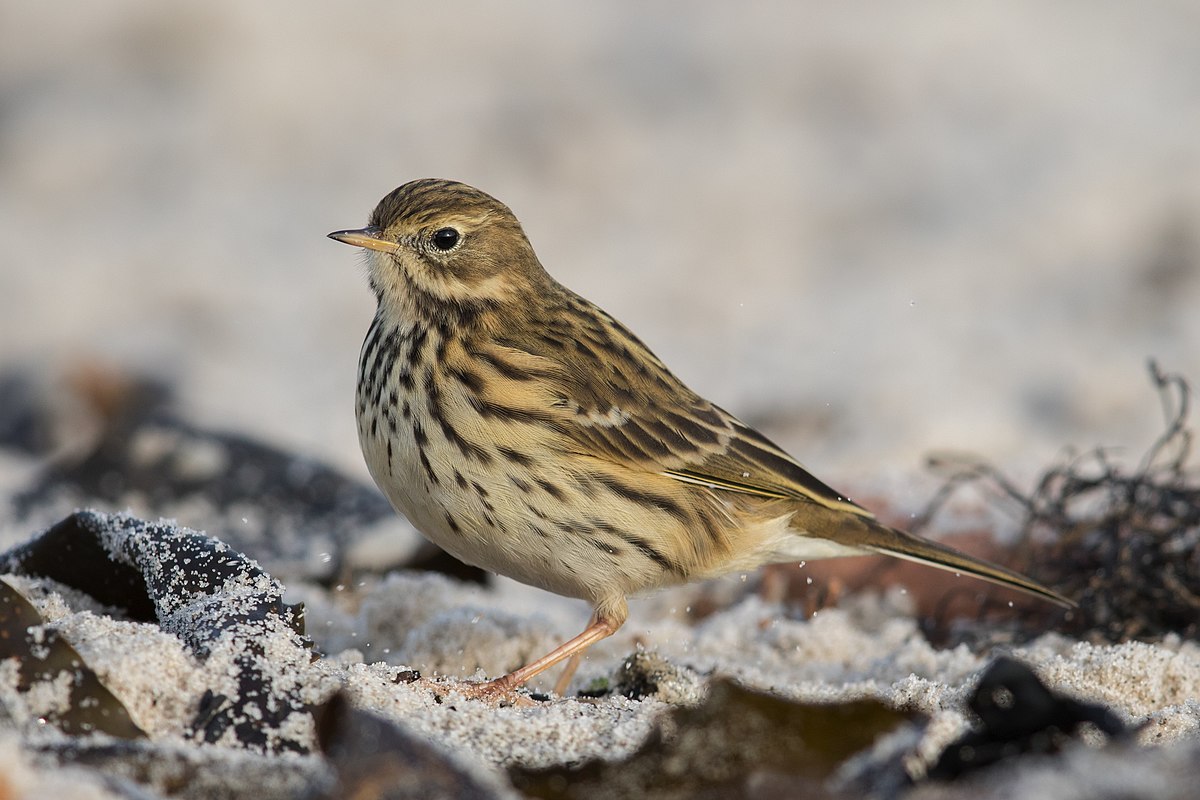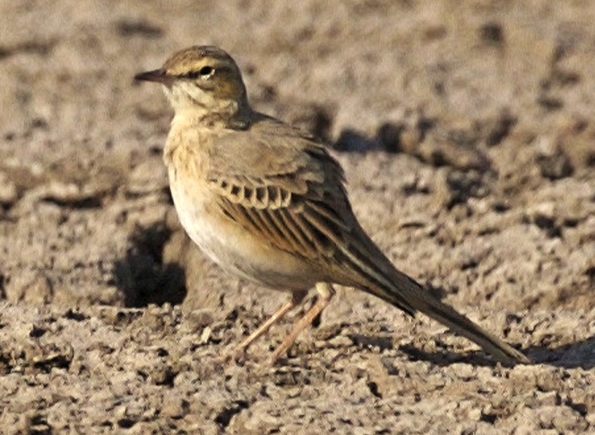Bird song classifiers for Kaltbrunnenriet visit in 2022
Decision table for identifying birdsong
Übung
| Bird | Description | Audio |
|
|
Automatically generated from Xeno-Canto recording.
Song: |
♫

|
|
|
Automatically generated from Xeno-Canto recording.
Call: |
♫

|
|
|
Automatically generated from Xeno-Canto recording.
Song: |
♫

|
|
|
Automatically generated from Xeno-Canto recording.
Song: |
♫

|
| improvisiert melodisch | ||
| Mimikry | ||
|
|
Mimikry improvisiert melodisch fast high (3-9 KHz) .
General: Der Gesang (bei Vogelwarte.ch) klingt für mich ähnlich wie eine Mönchsgrasmücke, aber nur in sehr kurzen Phrasen. Song: |
♫

|
| Triller | ||
|
|
Triller improvisiert melodisch fast high (3-8 KHz) .
Often one little phrase or even a single note repeated, a bit like a nightingale? Occasional figaro?
Song: |
♫

|
|
|
improvisiert melodisch fast low-high (2-7 KHz) .
Series of short, often squawky little bits, sometimes like a house sparrow, often repeated with only small variation. E.g. MmLMH? |
♫

|
| einfach rhythmisch | ||
|
|
einfach rhythmisch fast medium (1-5 KHz) .
|
♫

|
|
|
Automatically generated from Xeno-Canto recording.
Song: |
♫

|
| singt 20 Sekunden oder länger | ||
| Mimikry | ||
|
|
Mimikry singt 20 Sekunden oder länger slow medium (1-5 KHz) .
Das Beispiel auf vogelwarte.ch ist eher ein knarren und trillern,
ähnlicher Rhythmus und Klänge wie der Teichrohrsänger.
Song: |
♫

|
| komisch | ||
|
|
komisch singt 20 Sekunden oder länger fast medium (1-5 KHz) .
Weird, squeaky, urgent. Slower than Sumpfrohrsaenger.
Song: |
♫

|
| Raspel | ||
|
|
Raspel singt 20 Sekunden oder länger slow medium (1-5 KHz) .
General: Klingt für mich wie krächz pieps pieps.
Vogelarten der Schweiz sieht das anders:
'Laute und auffällig knarrende, rau tönende Strophe
''karre-kiet karre karre-keit.'' ' Song: |
♫

|
| einfach rhythmisch | ||
 Feldschwirl ■■
Feldschwirl ■■ |
einfach rhythmisch fast high (5-8 KHz) .
Buzzing like an insect or machinery. BirdLife Schweiz says like a grasshopper (which is after all the English name).
Song: |
♫

|
| improvisiert melodisch | ||
|
|
improvisiert melodisch fast medium (1-5 KHz) .
Song: |
♫

|
| einfach rhythmisch | ||
|
|
einfach rhythmisch slow high (6-8 KHz) .
High (6-8 KHz?) short sound repeated every half to 5 seconds.
Song: Gesang 'unauffällig' - zirp x 2-3, mal steigender tWIT |
♫

|
| improvisiert melodisch | ||
| Mimikry | ||
 Gelbspötter ■■
Gelbspötter ■■ |
Mimikry improvisiert melodisch fast low-high (2-10 KHz) .
Short bits 4-8 notes, sometimes with a little pause, overall a greenfinch feel. Some whoops, some chucks like a great tit, some bits like a house sparrow, even a meow. BirdLife Schweiz says full of vigor, includes some mis-tones and creaky calls; eBird says Song is fast, loud, and melodious with lots of mimicry.Can sing low (2k) or high (10k)
Song: |
♫

|
| stereotypisch melodisch | ||
|
|
stereotypisch melodisch slow high (3-9 KHz) .
Just a few notes, call seems to be common but song rare. Very short chirp of ~ 1 sec, long pause of 3 secs. At Wauwilermoos it seemed to be 'Twee tweetwee (higher note:) twee!'
Song: |
♫

|
| einnotig | ||
 Wiesenpieper ■■
Wiesenpieper ■■ |
einnotig fast medium (1-5 KHz) .
Single note, possibly rising at the end. (Or: long 4 second phrases, gradually louder then softer; swoopy or whoopy.) Sings in flight. BirdID: Song very similar to Rock Pipit, but tone less full and more brittle. Lacks Rock Pipit's closing trill, and beginning is less "hammering". - but what does a rock pipit sound like?
Song: |
♫

|
| einfach rhythmisch | ||
| Triller, aufsteigend | ||
|
|
Triller, aufsteigend einfach rhythmisch slow medium (1-5 KHz) .
Reminds me of a greenfinch - series of trills, whoops and other sounds with a long pause
Song: |
♫

|
| stereotypisch melodisch | ||
 Brachpieper ❑❑
Brachpieper ❑❑ |
stereotypisch melodisch slow medium (2-6 KHz) .
Song simple. Consists of three notes merged in a short, continuous and ringing "tsee-ro-ee", given every 1-2 seconds.
Song: |
♫

|
| singt 20 Sekunden oder länger | ||
| Mimikry | ||
|
|
Mimikry singt 20 Sekunden oder länger slow medium (1-5 KHz) .
Reminds me a bit of a Rohrsaenger/Feldlerche with its short, varied bits. BirdID says Song surprisingly varied with many expert imitations of small passerines, interwoven with bell-like ringing and dry chirping sounds. May be confusing and hard to identify if bird not seen. Song not very loud, but phrases can be very long. 'May be confusing' - tell me about it! What's not confusing about trying to tell apart 422 species of Swiss birds!
Song: |
♫

|
|
|
Automatically generated from Xeno-Canto recording.
Call: Nabu: Ein hartes „kjack“ oder „schack“ sowie ein raues „tschräh“ hört man am häufigsten von der Dohle. Sie ist ein begabtes Stimmwunder und hat eine Vielzahl von Lauten und Imitationen auf Lager. [Link] | ♫ |
| einfach rhythmisch | ||
 Rohrschwirl ■■
Rohrschwirl ■■ |
einfach rhythmisch fast medium (3-5 KHz) .
Endless buzzing like an insect or machinery. Lower tone than Feldschwirl.
Song: |
♫

|
| stereotypisch melodisch | ||
| Triller | ||
|
|
Triller stereotypisch melodisch slow high (3-7 KHz) .
General: At Fanel I heard sequences of whistles and trills (buzzes?), just a few notes, but wandering up and down: m h lll, or l m hhh m. Listen to recording of 2022-06-25 13.37.28 Song: |
♫

|
|
|
stereotypisch melodisch slow high (3-9 KHz) .
General: Meistens hört man das Pfief...chk..chk..Pfief von den Rufen, siehe dort. Song: Nabu: Der Gesang ist ein feines Trillern und selten zu hören (someone at XenoCanto compares it to a blue tit trill). [Link] Song: Song: high tsee-tsee; funny downhill trill |
♫

|
Übung
♫ Lösung
Drosselrohrsänger XC661392 - Great Reed Warbler - Acrocephalus arundinaceus - song.
♫
Lösung
Drosselrohrsänger XC661392 - Great Reed Warbler - Acrocephalus arundinaceus - song.
♫
 Lösung
Zwergtaucher XC648836 - Little Grebe song in South Africa, sounds like what I heard in Altstätten - Tachybaptus ruficollis capensis.
♫
Lösung
Zwergtaucher XC648836 - Little Grebe song in South Africa, sounds like what I heard in Altstätten - Tachybaptus ruficollis capensis.
♫
 Lösung
Blaukehlchen XC131272 - Bluethroat - Luscinia svecica volgae - song.
♫
Lösung
Blaukehlchen XC131272 - Bluethroat - Luscinia svecica volgae - song.
♫
 Lösung
Rohrschwirl XC710242 - Savi's Warbler - Locustella luscinioides - song.
♫
Lösung
Rohrschwirl XC710242 - Savi's Warbler - Locustella luscinioides - song.
♫
 Lösung
Feldschwirl XC557238 - Common Grasshopper Warbler - Locustella naevia - song.
♫
Lösung
Feldschwirl XC557238 - Common Grasshopper Warbler - Locustella naevia - song.
♫
 Lösung
Rohrweihe XC884134 - Western Marsh Harrier - Circus äruginosus - whooping, swooping call.
♫
Lösung
Rohrweihe XC884134 - Western Marsh Harrier - Circus äruginosus - whooping, swooping call.
♫
 Lösung
Gartengrasmücke XC728379 - Garden Warbler - Sylvia borin - song.
♫
Lösung
Gartengrasmücke XC728379 - Garden Warbler - Sylvia borin - song.
♫
 Lösung
Grosser Brachvogel XC625195-grosser brachvogel, michal jezierski, uk.
♫
Lösung
Grosser Brachvogel XC625195-grosser brachvogel, michal jezierski, uk.
♫
 Lösung
Bekassine XC812599 - Common Snipe song, one note, 4x per sec - Gallinago gallinago.
♫
Lösung
Bekassine XC812599 - Common Snipe song, one note, 4x per sec - Gallinago gallinago.
♫
 Lösung
Rohrammer XC723277 - Common Reed Bunting - Emberiza schöniclus - song.
♫
Lösung
Dohle Jackdaw, etc in Illnau.
♫
Lösung
Rohrammer XC723277 - Common Reed Bunting - Emberiza schöniclus - song.
♫
Lösung
Dohle Jackdaw, etc in Illnau.
♫
 Lösung
Braunkehlchen XC775379 - Whinchat - Saxicola rubetra - song, recorded in Sweden.
♫
Lösung
Braunkehlchen XC775379 - Whinchat - Saxicola rubetra - song, recorded in Sweden.
♫
 Lösung
Schwanzmeise XC572437 - Long-tailed Tit - Aegithalos caudatus - song.
♫
Lösung
Schwanzmeise XC572437 - Long-tailed Tit - Aegithalos caudatus - song.
♫
 Lösung
Schafstelze XC721189 - Western Yellow Wagtail - Motacilla flava cinereocapilla - song.
♫
Lösung
Schafstelze XC721189 - Western Yellow Wagtail - Motacilla flava cinereocapilla - song.
♫
 Lösung
Wasserralle XC943956 - Water Rail - Rallus aquaticus - squeaky call.
♫
Lösung
Wasserralle XC943956 - Water Rail - Rallus aquaticus - squeaky call.
♫
 Lösung
Sperber XC818384 - Eurasian Sparrowhawk - Accipiter nisus - call, Brandenburg, Germany.
♫
Lösung
Sperber XC818384 - Eurasian Sparrowhawk - Accipiter nisus - call, Brandenburg, Germany.
♫
 Lösung
Teichrohrsänger XC653035 - Eurasian Reed Warbler - Acrocephalus scirpaceus - song.
♫
Lösung
Teichrohrsänger XC653035 - Eurasian Reed Warbler - Acrocephalus scirpaceus - song.
♫
 Lösung
Gelbspötter XC772854 - Icterine Warbler - Hippolais icterina - song, recorded in Sweden.
♫
Lösung
Gelbspötter XC772854 - Icterine Warbler - Hippolais icterina - song, recorded in Sweden.
♫
 Lösung
Schilfrohrsänger XC661577 - Sedge Warbler - Acrocephalus schönobänus - song.
♫
Lösung
Schilfrohrsänger XC661577 - Sedge Warbler - Acrocephalus schönobänus - song.
♫
 Lösung
Neuntöter XC570644 - Marsh Warbler - Acrocephalus palustris - song.
♫
Lösung
Neuntöter XC570644 - Marsh Warbler - Acrocephalus palustris - song.
♫
 Lösung
Brachpieper XC726515 - Tawny Pipit - Anthus campestris - song.
♫
Lösung
Brachpieper XC726515 - Tawny Pipit - Anthus campestris - song.
♫
 Lösung
Wiesenpieper XC722919 - Meadow Pipit - Anthus pratensis - song.
♫
Lösung
Wiesenpieper XC722919 - Meadow Pipit - Anthus pratensis - song.
♫
 Lösung
Grauschnäpper KLingt für mich bisher wie alle 1-notige Rufe. XC656714 - Spotted Flycatcher - Muscicapa striata.
♫
Lösung
Grauschnäpper KLingt für mich bisher wie alle 1-notige Rufe. XC656714 - Spotted Flycatcher - Muscicapa striata.
♫
 Lösung
Schwarzkehlchen XC710467 - European Stonechat - Saxicola rubicola rubicola.
♫
Lösung
Schwarzkehlchen XC710467 - European Stonechat - Saxicola rubicola rubicola.
♫
 Lösung
Baumpieper XC570506 - Tree Pipit - Anthus trivialis - song.
Lösung
Baumpieper XC570506 - Tree Pipit - Anthus trivialis - song.
Vögel ohne ausreichende Informationen zum Gesang
| Bird | Description | Audio |
|
|
Call: | |
| nicht musikalisch | ||
 Silberreiher ■■
Infos über Rufe, nicht Gesang!!
Silberreiher ■■
Infos über Rufe, nicht Gesang!!
|
nicht musikalisch slow low (1-3 KHz) .
Partly an awkward quack: uck uck. Rattles. Deep-toned urrr. Higher-toned trill.
Call: |
♫

|
|
|
Song: | |
 Rotkehlpieper
Rotkehlpieper |
Song: | |
 Nachtreiher ■■
Infos über Rufe, nicht Gesang!!
Nachtreiher ■■
Infos über Rufe, nicht Gesang!!
|
Call: | |
 Rotfussfalke ❑❑
Infos über Rufe, nicht Gesang!!
Rotfussfalke ❑❑
Infos über Rufe, nicht Gesang!!
|
Call: | |
| Rotschulterente Infos über Rufe, nicht Gesang!! |